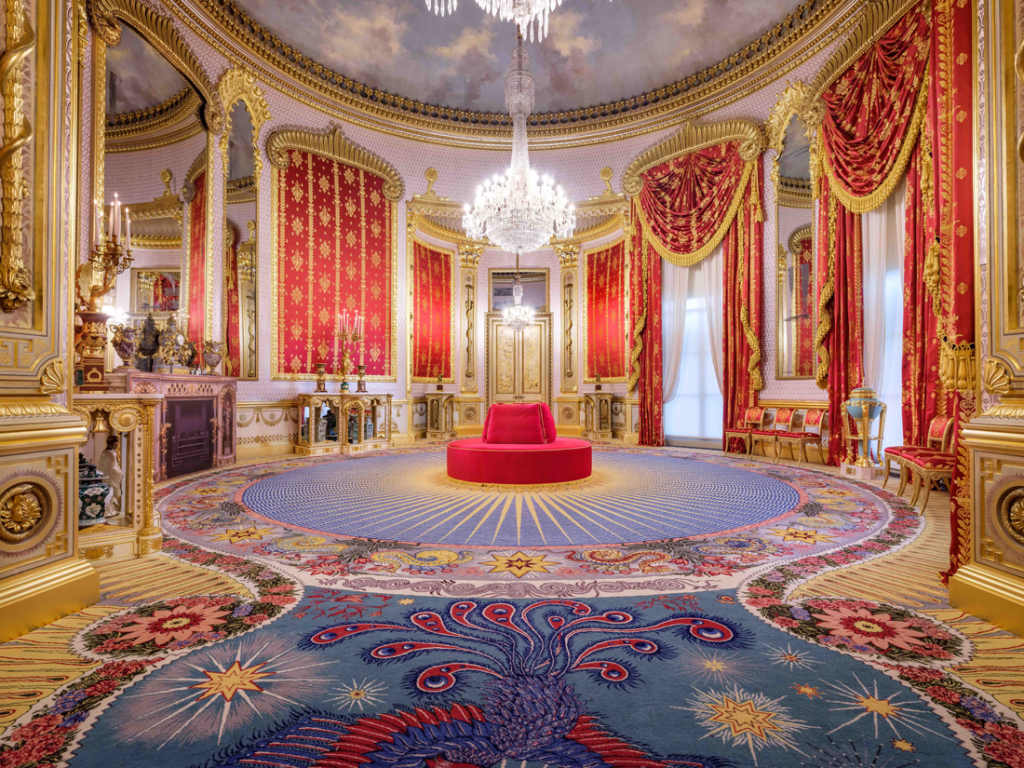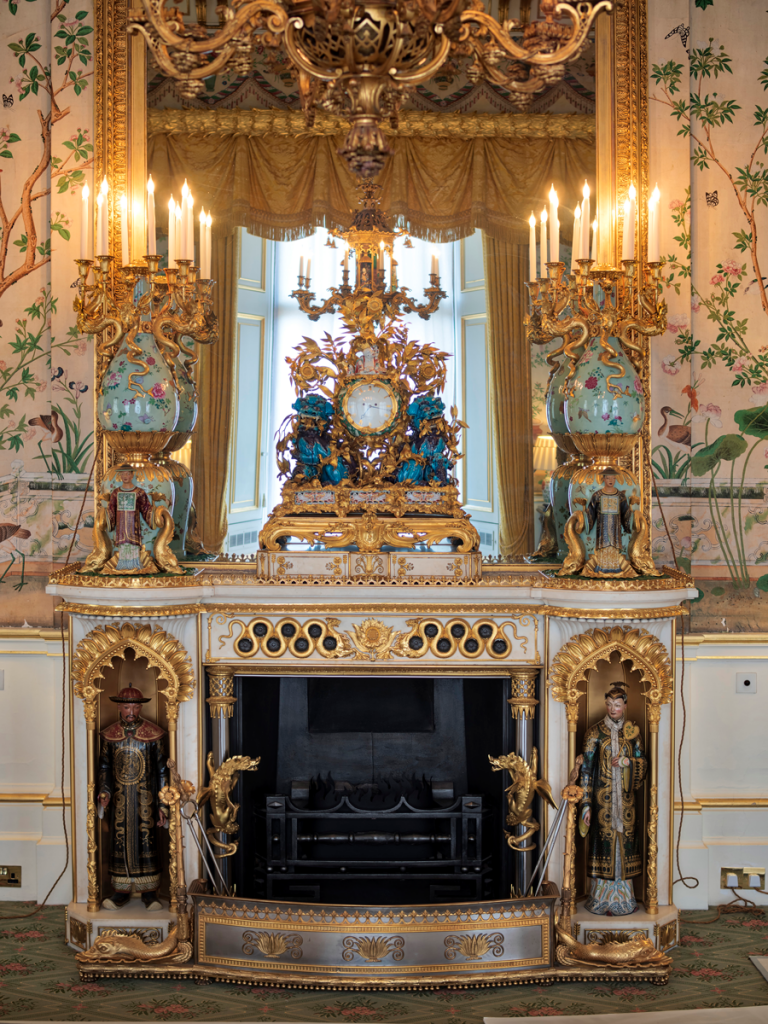
This week we are returning to the Royal Pavilion, Brighton where the exhibition ‘A Prince’s Treasure’ is currently on show. It provides a once in a lifetime opportunity to see furniture and works of art, generously loaned by Her Majesty The Queen, displayed as George IV intended in the Pavilion.
We are once again in the company of David Beevers, Keeper of the Royal Pavilion. In The Saloon, the grandest Royal room in the Pavilion, David remarks “Light, the sun and sunflowers are the dominate motifs.”
George IV was self-indulgent, hedonistic, extravagant and self-pitying. He married Mrs Fitzherbert privately and illegally without his father George III’s permission and did not behave well towards Queen Caroline. But he was a charismatic personality.
After Napoleon’s defeat at the Battle of Waterloo in 1815 George felt that his regal magnificence was the embodiment of Britain’s greatness. In 1811 George had boasted that his court would eclipse that of the French Emperor Napoleon I. Throughout his life George was a passionate patron of the arts, and a connoisseur and collector of the furniture, paintings and works of art of France from the period of Louis XIV at Versailles to Napoleon Bonaparte.
David says ‘The Saloon represents the Pavilion style at its confident best…there is a Stateliness. It’s decorated in the royal colours of crimson, silver and gold – this regal space must have provided a remarkable backdrop to the ceremony and drama of George’s reign.”

David draws my attention to the Kylin clock flanked by the Chinese porcelain vases with English gilt-bronze mounts. They were designed to stand together upon the remarkable chimneypiece which has been photographically superimposed to great effect, the original remains in the East Wing of Buckingham Palace. The clock has a later movement by B.L. Vuillamy which is mounted in a 17th century Chinese porcelain bowl above a pair of 18th century Chinese mythical creatures sometimes described as Kylin. David explains that the clock was acquired in France but the gilt-bronze fruit, flower and sunflower motifs were supplied by the bronze manufacturer Samuel Parker to a design by Robert Jones. Robert Jones’ design can also be seen in the gilt-bronze candle sockets which surmount the pair of Chinese export vases.
David describes the pieces from the Royal Collection as “Objects of unparalleled magnificence”.
David Beevers and the Royal Pavilion team, The Royal Collection Trust and the Government Indemnity Office must all be congratulated on the success of this remarkable venture.
George’s collection in the context of The Royal Pavilion, Brighton, provides a unique insight into the royal and aristocratic tastes of the early 19th century. The Chinese porcelain and clocks with their gilt-bronze mounts bring together George’s fascination with the art of 18th/early 19th century France and the exotic creations of the east.
You can book tickets for ‘A Princes’ Treasure’ by visiting www.brightonmuseums.org.uk/royalpavilion and you must treat yourself to the stunning new Guide to The Royal Pavilion – it is beautifully written and produced.